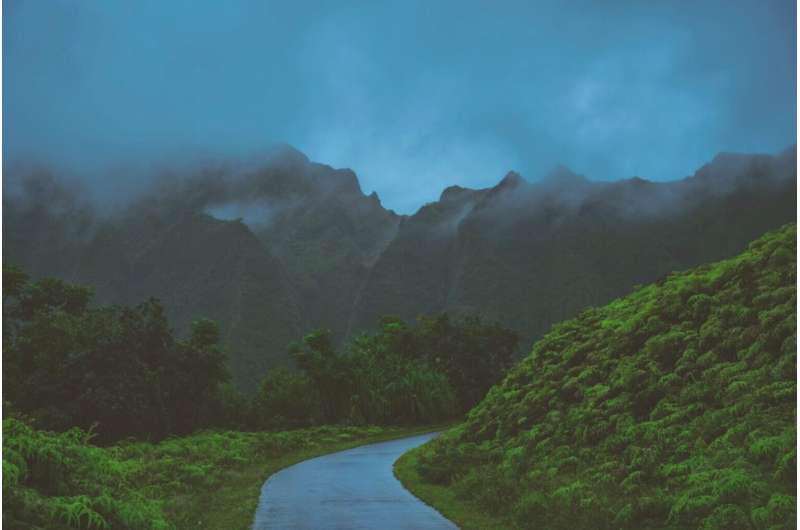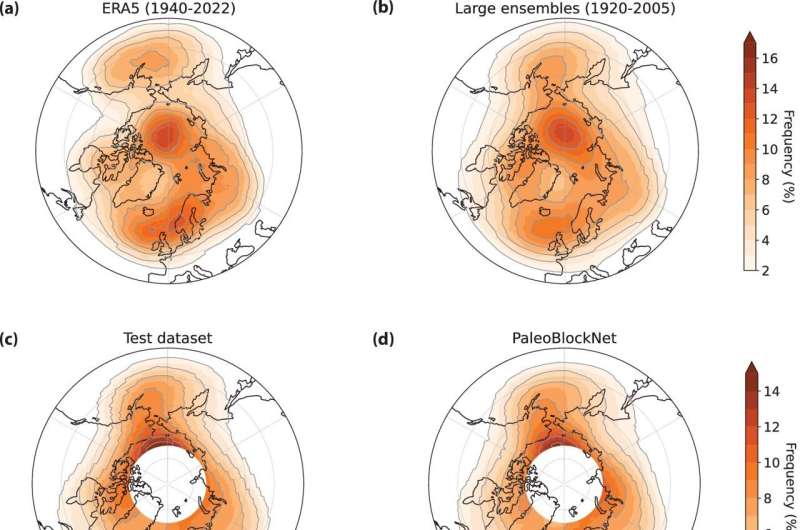

Atmospheric blocking events are persistent, high-impact weather patterns that occur when large-scale high-pressure systems become stationary and divert the jet stream and storm tracks for days to weeks, and can be associated with record-breaking flooding or heat waves, such as in Europe in 2023.
In a recent study published in Communications Earth & Environment, University of Hawai’i at Mānoa atmospheric scientist Christina Karamperidou used a deep learning model to infer the frequency of blocking events over the past 1,000 years and shed light on how future climate change may impact these significant phenomena.
“This study set out to extract a paleoweather signal from paleoclimate records using a deep learning model that infers atmospheric blocking frequency from surface temperature,” said Karamperidou. “This is a unique study and the first attempt to reconstruct a long record of blocking frequencies based on their relationship with surface temperature, which is complex and unknown. Machine learning methods can be very powerful for such tasks.”
Training the deep learning model
Karamperidou developed a specialized deep learning model, which she trained using historical data and large ensembles of climate model simulations. The model was then capable of inferring the frequency of blocking events from anomalies in seasonal temperature reconstructions over the Last Millennium. These past temperature reconstructions are relatively well-constrained by extensive networks of tree-ring records sensitive to temperature during the growing season.
“This approach demonstrates that deep learning models are powerful tools to overcome the long-standing problem of extracting paleoweather from paleoclimate,” said Karamperidou. “This approach can also be used for the instrumental period of climate history, which began in the 18th century when routine weather measurements were made, since we only have reliable data to identify blocking since the 1940s, or possibly only the satellite era (post-1979).”

Frequency of future blocking events
There isn’t yet a scientific consensus regarding how climate change will change the frequency of blocking events. These strong, persistent mid-latitude high-pressure systems can have significant impacts for Hawai’i, where flooding has accompanied persistent North Pacific blocks, and also worldwide, for example, in the Pacific Northwest and Europe, where summertime blocking can bring extreme heat waves.
So understanding changes in the frequency of these events, especially as they relate to the other big players for climate, such as El Niño and the long-term patterns of sea surface temperatures in the tropical Pacific, is very important for Hawai’i. This study allowed Karamperidou to relate blocking frequencies in the mid- and high-latitudes to tropical Pacific climate variability in the long context of the last millennium, which is essential for climate model validation and to narrow down uncertainties in future climate projections of blocking.
Open research and transparency
Karamperidou worked with two UH Mānoa students to create a unique web-interface to explore the deep learning model and the resulting reconstructions. She highlighted that sharing results and methods in this way is important for Open Research best practices and transparency, especially as the application of machine learning and artificial intelligence expands rapidly into many aspects of daily life.
In the future, Karamperidou plans to explore a range of features and architectural enhancements of the deep learning model to expand its applications for climate phenomena and variables directly related to high socioeconomic impacts.
More information:
Christina Karamperidou, Extracting paleoweather from paleoclimate through a deep learning reconstruction of Last Millennium atmospheric blocking, Communications Earth & Environment (2024). DOI: 10.1038/s43247-024-01687-y
Provided by
University of Hawaii at Manoa
Citation:
Deep learning illuminates past and future atmospheric blocking events (2024, October 16)
retrieved 16 October 2024
from https://phys.org/news/2024-10-deep-illuminates-future-atmospheric-blocking.html
This document is subject to copyright. Apart from any fair dealing for the purpose of private study or research, no
part may be reproduced without the written permission. The content is provided for information purposes only.